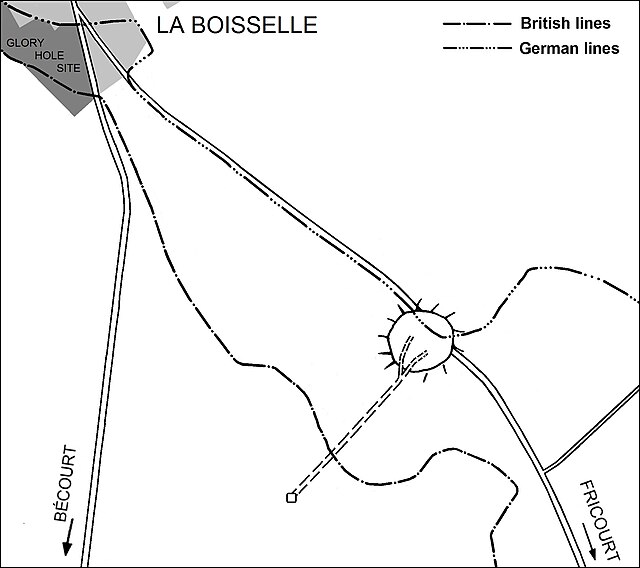The Lochnagar mine south of the village of La Boisselle in the Somme département was an underground explosive charge, secretly planted by the British during the First World War, to be ready for 1 July 1916, the first day on the Somme. The mine was dug by the Tunnelling Companies of the Royal Engineers under a German field fortification known as Schwabenhöhe. A large crater survived the war known as the Lochnagar crater or the Trou de mine de La Boisselle.
Geological cross-section of the Somme battlefield
Plan of the Lochnagar mine
The memorial cross
William Orpen: Mines and the Bapaume Road, La Boisselle (Art.IWMART2962)
The first day on the Somme, 1 July 1916, was the beginning of the Battle of Albert (1–13 July), the name given by the British to the first two weeks of the 141 days of the Battle of the Somme in the First World War. Nine corps of the French Sixth Army and the British Fourth and Third armies attacked the German 2nd Army from Foucaucourt south of the Somme, northwards across the Somme and the Ancre to Serre and at Gommecourt, 2 mi (3.2 km) beyond, in the Third Army area. The objective of the attack was to capture the German first and second defensive positions from Serre south to the Albert–Bapaume road and the first position from the road south to Foucaucourt.
An example of a Lewis gun
60-pounder gun battery
Aerial photograph of a British gas attack from Carnoy to Montauban, shortly before the Somme offensive.
Diagram of the Lochnagar mine







